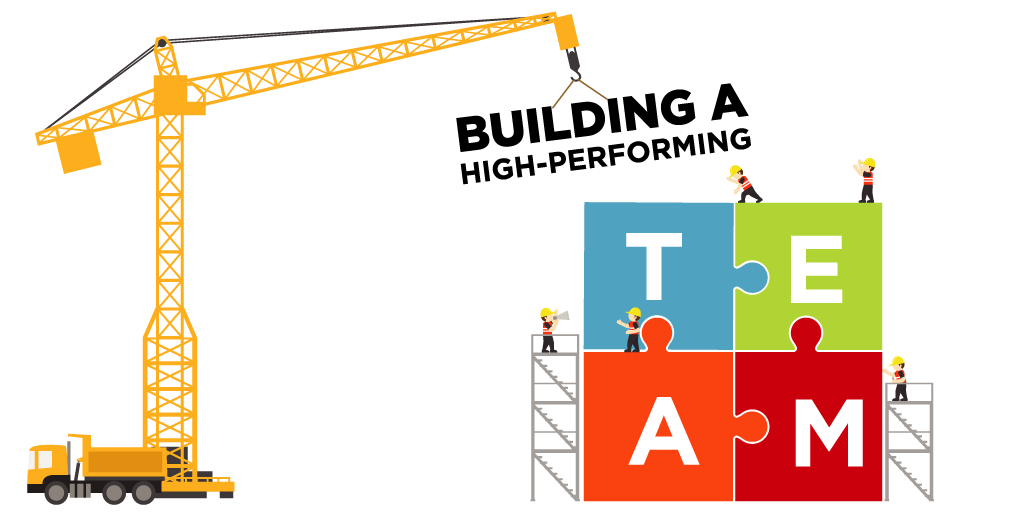Building and Managing High-Performance Teams
Transform ordinary groups into extraordinary teams that consistently exceed expectations
Understanding High-Performance Teams
In today's complex and rapidly changing business environment, high-performance teams have become essential for organizational success. But what exactly distinguishes these exceptional teams from average ones?
High-performance teams consistently deliver results that exceed expectations. They demonstrate strong alignment with organizational goals, maintain exceptional collaboration, adapt quickly to changes, and continuously improve their processes and outcomes.
Key Characteristics of High-Performance Teams
- Shared Purpose and Vision: United commitment to common goals
- Clear Roles and Accountability: Each member understands their unique contribution
- Effective Communication: Open, honest, and constructive dialogue
- Trust and Psychological Safety: Members feel safe to take risks and be vulnerable
- Complementary Skills: Diverse abilities that create a stronger whole
- Continuous Learning Mindset: Embracing challenges as growth opportunities
The Team Formation Process
Building a high-performance team begins with strategic formation. Research shows that deliberate team construction significantly increases the likelihood of exceptional performance.
The most effective teams are carefully assembled with consideration for both technical expertise and interpersonal dynamics. This balanced approach ensures teams can execute tasks efficiently while maintaining strong collaborative relationships.
Selection Strategies
- Skills assessment and mapping
- Personality and work style evaluation
- Cognitive diversity consideration
- Values alignment verification
- Growth potential assessment
Team Size Considerations
- Small teams (5-7): Faster decision-making
- Medium teams (8-10): Balanced perspectives
- Large teams (11+): Resource-intensive but wider skill range
- Sub-team structures for complex projects
- Core and extended team models
Remember that team formation is not just about assembling the most skilled individuals—it's about creating a cohesive unit where the collective output exceeds the sum of individual contributions. This "team synergy" is the hallmark of truly high-performing groups.
Establishing a Foundation for High Performance
Once your team is formed, establishing the right foundation is critical. This initial phase sets the tone for how the team will function and develop over time.
Research by Al Mithaq Institute indicates that teams with well-established foundational elements are 42% more likely to achieve their performance goals compared to teams that skip this critical step.
Essential Foundational Elements
Define Purpose and Vision
Co-create a compelling purpose statement that connects team objectives to broader organizational goals. This shared vision serves as the north star for all team activities and decisions.
Establish Team Norms
Develop clear agreements about how team members will work together, communicate, make decisions, and hold each other accountable. These norms should be documented and regularly revisited.
Clarify Roles and Responsibilities
Define both functional roles (based on expertise) and team roles (based on interpersonal contributions). Ensure everyone understands their primary areas of responsibility and accountability.
Align on Success Metrics
Jointly establish clear, measurable indicators of success for both team outcomes and team functioning. These metrics should be specific, meaningful, and regularly monitored.
During this foundational phase, invest time in team building activities that help members develop interpersonal connections. Research shows that teams with strong relational bonds demonstrate higher levels of trust, collaboration, and resilience when facing challenges.
Leadership Strategies for Team Excellence
Effective leadership is perhaps the most significant factor in developing high-performance teams. Leaders set the tone, create the conditions for success, and continuously cultivate team capabilities.
The most successful team leaders balance task-focused direction with relationship-building behaviors. They understand that sustainable high performance requires both achieving results and maintaining healthy team dynamics.
| Leadership Dimension | Key Behaviors | Impact on Team Performance |
|---|---|---|
| Direction Setting |
|
Provides focus and alignment, reducing wasted effort and increasing collective momentum toward shared goals |
| Talent Development |
|
Enhances individual capabilities, resulting in greater collective capacity and adaptability to new challenges |
| Psychological Safety |
|
Enables innovation, honest communication, and learning from failures, leading to continuous improvement |
| Resource Management |
|
Creates enabling conditions for peak performance by ensuring teams have what they need to succeed |
The Situational Leadership Approach
Effective team leadership requires adapting your style to the team's development stage and the specific situation at hand. No single leadership approach works in all circumstances.
Directive Leadership
High direction, lower support
Best for: New teams, crisis situations, or when team lacks experience
Coaching Leadership
High direction, high support
Best for: Developing teams with motivated members who need skill development
Supportive Leadership
Lower direction, high support
Best for: Capable teams that need confidence building and encouragement
Delegative Leadership
Lower direction, lower support
Best for: Highly skilled, motivated teams that operate autonomously
Building Team Cohesion and Trust
Cohesion and trust form the invisible glue that binds high-performance teams together. When team members trust one another, they communicate more openly, collaborate more effectively, and navigate conflicts more constructively.
Trust doesn't develop automatically—it must be intentionally cultivated through consistent behaviors and shared experiences that demonstrate reliability, competence, and good intentions.
Case Study: Trust Transformation
A multinational team at a Dubai-based financial institution was struggling with low trust and siloed communication, resulting in missed deadlines and quality issues. After participating in Al Mithaq Institute's team development program:
- Team members completed trust inventories to identify specific trust gaps
- They participated in structured vulnerability exercises to build psychological safety
- Leaders implemented a "transparency cascade" approach to information sharing
- The team adopted a formal process for addressing trust breaches
Within three months, trust metrics improved by 67%, cross-functional collaboration increased by 53%, and the team completed a major project two weeks ahead of schedule.
Building Competence Trust
- Deliver consistently on commitments
- Acknowledge skill gaps honestly
- Share knowledge generously
- Recognize others' expertise
Building Interpersonal Trust
- Demonstrate benevolent intentions
- Maintain appropriate confidentiality
- Show personal interest in others
- Be willing to show vulnerability
Building Structural Trust
- Ensure fair processes and procedures
- Create transparency in decision-making
- Distribute resources equitably
- Apply consistent standards
Fostering Productive Team Communication
Communication is the lifeblood of high-performance teams. Effective communication enables coordination, problem-solving, innovation, and relationship building—all essential components of team excellence.
In today's complex work environments, teams must master both in-person and virtual communication, synchronous and asynchronous interactions, and formal and informal information sharing.
Communication Best Practices
Meeting Discipline: Establish clear agendas, start/end on time, document decisions, and assign follow-up actions
Active Listening: Practice attentive focus, asking clarifying questions, and summarizing to confirm understanding
Feedback Culture: Establish regular feedback rhythms where constructive input flows freely in all directions
Information Management: Create systems for documenting and sharing information that balance accessibility with security
Conflict Communication: Adopt protocols for addressing disagreements directly and constructively before they escalate
Research from Al Mithaq Institute shows that high-performance teams typically spend 20-30% of their time in intentional communication activities. This investment pays dividends in reduced misunderstandings, faster problem resolution, and stronger working relationships.
Navigating Team Development Stages
Teams naturally progress through predictable developmental stages. Understanding these stages helps leaders anticipate challenges and implement appropriate interventions to facilitate growth.
The classic Tuckman model (Forming, Storming, Norming, Performing) provides a useful framework, though in reality, teams often move back and forth between stages as they face new challenges or changes in membership.
| Stage | Characteristics | Leadership Approach |
|---|---|---|
| Forming |
|
|
| Storming |
|
|
| Norming |
|
|
| Performing |
|
|
The most effective team leaders help their teams move through these stages efficiently while ensuring they develop the necessary capabilities at each stage before progressing. Rushing through early stages often leads to problems later in the team's lifecycle.
How Al Mithaq Institute Can Help
Our specialized courses in Team Leadership, Human Resource Management, and Organizational Development provide professionals with the knowledge and skills needed to build and manage high-performance teams.
Through interactive workshops, case studies, and personalized coaching, participants learn proven frameworks and practical techniques they can immediately apply in their organizations.
FAQ: Building High-Performance Teams
While there's no fixed timeline, most teams require 3-6 months of intentional development to reach high-performance levels. The journey depends on several factors including team size, complexity of work, existing relationships among members, leadership effectiveness, and organizational support. Teams with members who have worked together previously may progress faster, while virtual or cross-cultural teams often need more time to establish strong communication patterns and trust. Rather than focusing on a specific timeline, leaders should concentrate on systematically developing the key elements of high performance while monitoring progress against specific behavioral indicators.
The most common mistake is focusing exclusively on task performance while neglecting team dynamics and development processes. Many leaders assume that if they assemble talented individuals and give them clear objectives, high performance will naturally follow. However, research consistently shows that even the most skilled individuals will underperform without proper team cohesion, communication systems, and psychological safety. Another significant mistake is failing to adapt leadership style to the team's developmental stage—for example, providing too little direction in forming stages or insufficient autonomy in performing stages. Successful team leaders balance attention to results with deliberate cultivation of the team's underlying capabilities.
Maintaining performance during change requires proactive leadership strategies. First, increase communication frequency and transparency—uncertainty breeds anxiety that diminishes performance, so share information about the change as early and completely as possible. Second, refocus on the team's core purpose and how it connects to the organization's direction, helping members see how their work remains relevant. Third, acknowledge the emotional impact of change and provide appropriate support while maintaining high expectations. Fourth, protect team boundaries by filtering which organizational changes directly affect the team and which can be buffered. Finally, involve the team in implementing changes that affect them directly, as participation increases buy-in. High-performance teams are inherently more change-resilient due to their strong foundation of trust and clear communication channels.
Contrary to common belief, high-performance teams experience regular conflict—but it's primarily task-focused rather than relationship-focused. Cognitive conflict (disagreement about ideas, approaches, and decisions) is highly beneficial when managed properly, as it leads to more thorough analysis, creative solutions, and better decisions. However, affective conflict (personal tensions, identity threats, and status competitions) is generally destructive to team performance. The key difference is that in high-performance teams, members challenge each other's thinking while maintaining mutual respect. They've established norms for expressing disagreement constructively, separating ideas from identities, and resolving conflicts efficiently. Leaders should actively encourage cognitive conflict while helping the team establish boundaries that prevent escalation to personal attacks.







